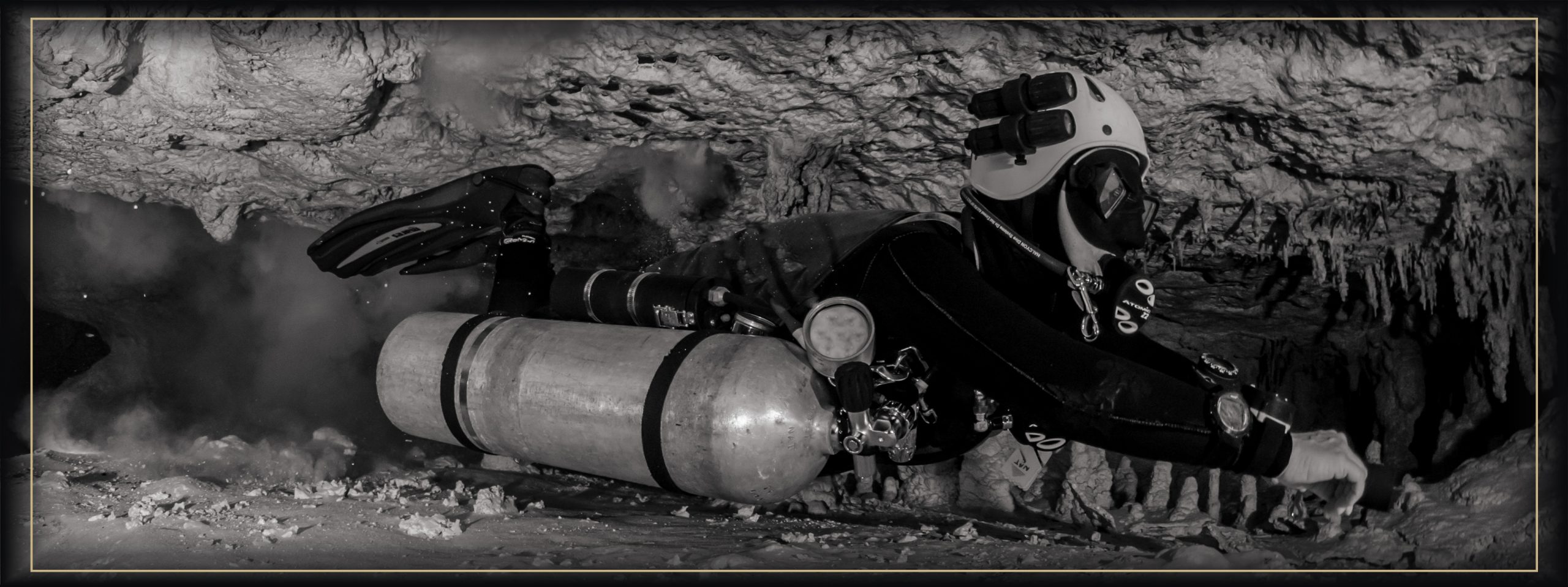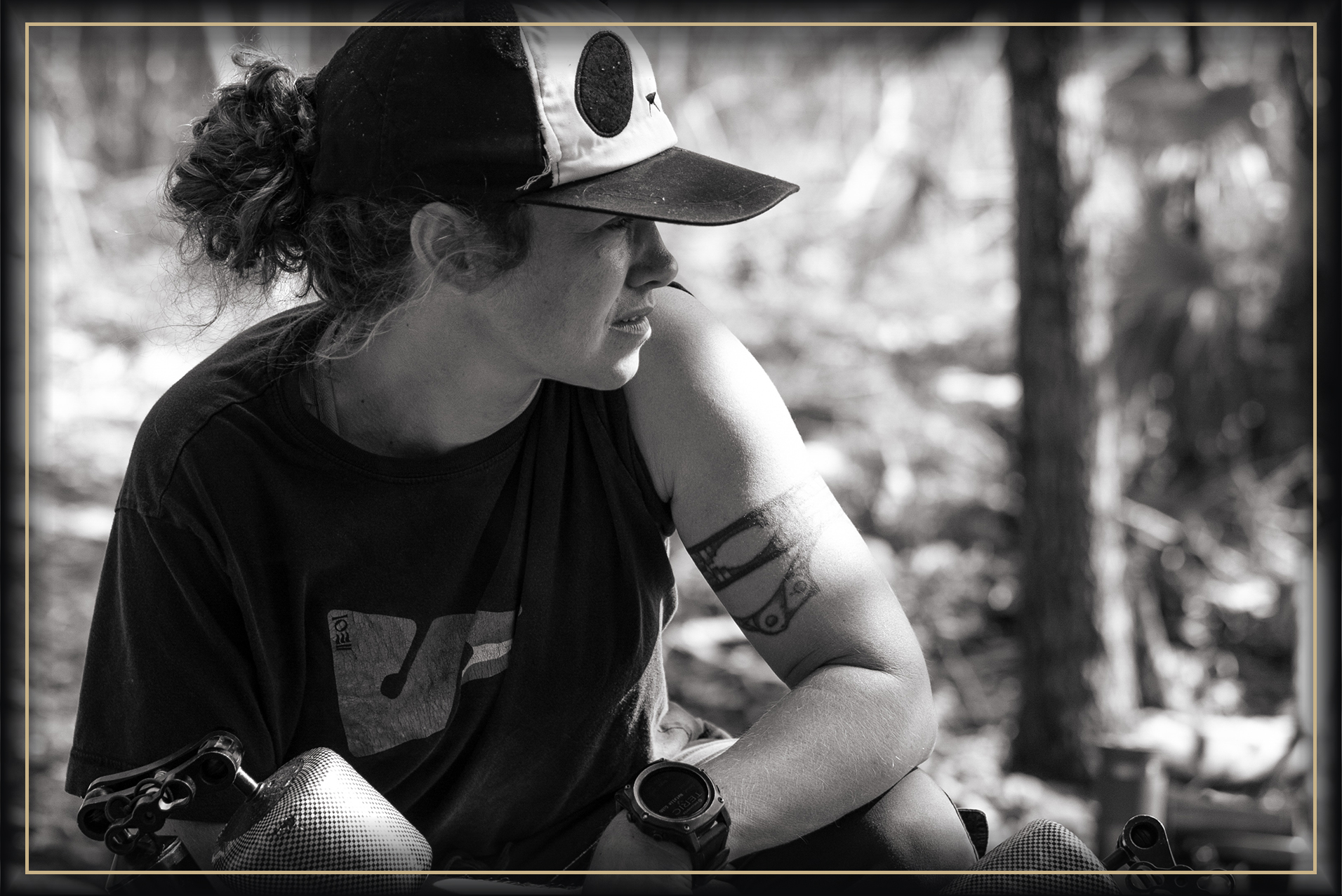
nat@underthejungle.com
CONTACT NAT
nat@underthejungle.com
NAT QUICK STATS
• Cave Explorer
• TDI Instructor Trainer
• TDI Cave and Side Mount Instructor
• Woman Diver’s Hall of Fame (WDHOF) 2020
• WDHOF Board of Trustees 2022-2025
• Underwater Photographer and Videographer
• Public Speaker
• From Orange County, California
• In Mexico Since 2006
• Languages: English, Spanish

REASONS THAT I CAVE DIVE
The freedom, the feeling of flying through a three-dimensional structure. It’s like being plonked down in the middle of a fascinating landscape or city and being told – go investigate! I am insatiably curious about what is around the next corner. The Yucatan Peninsula has the most extensive cave systems in the world and we are finding new ones all the time. I am never going to run out of new cave to see.
I love that cave diving pushes a diver mentally and physically, requiring total focus and precision. You have to be one-hundred percent mentally present when you cave dive, so the minutiae of the everyday world just slips away. It is a sport full of paradoxes. I feel liberated in an enclosed space; calm during a challenging dive, and most myself when I leave my terrestrial existence behind.
PHILOSOPHY
Proceed slowly. Learning any sort of technical diving is a process, and it is important to master your current level and base skills, as well as to gain experience before moving on to subsequent levels. My courses stress awareness, conservation, teamwork, and technique. As an instructor I am meticulous, so be prepared for some very detailed post dive analyses and a lot of feedback. This is a demanding activity, and courses are tough. I will push you to excel, and you will be frustrated at times – but your hard work will pay off! The confidence and knowledge gained from your training will ultimately make your dives more enjoyable.
TALK: EXPLORATION FAILS
WHY IS CAVE EXPLORATION SO IMPORTANT TO YOU?
There reached a point during our exploration at cenote Muk Ki’in that the end of line was approximately 10,000 feet from a known air source. We had purchased scooters and perfected our scooter techniques, practiced hauling multiple stages through restrictions, and spent a good deal of time on the logistics. Hovering at the end of line with a loaded reel in my hand, a flood of emotions hit me. All the time, effort, and expense leading up to this moment was overwhelming. I was 10,000 feet back in a cave, and I was going to go further. My hand was shaking and I was filled with dread. All I wanted to do was turn back, but I knew I was prepared. I tied off my reel and started laying line.
Succeeding at exploration requires challenging yourself, and again, learning to control yourself mentally and emotionally. It’s that moment at the end of the line, when everything comes together: a solid dive plan, the skills to proceed, and the darkness ahead. It is almost impossible to describe the meditative state you reach when you control your mind, focus on the cave, and move forward with confidence and calmness. Exploring caves makes us better divers and instructors; it teaches us much about caves and cave diving; and most importantly, exploration teaches us about ourselves.
HOW DOES IT FEEL TO BE A SMALL FEMALE IN A MALE-DOMINATED SPORT??
I am asked about this often, so I feel it is important to address. My gender and size have certainly benefitted me, as I tend to stand out, and some people may simply prefer a female instructor. I also think this is an activity in which small women have an advantage – smaller lungs lead to excellent air consumption rates and little frames can fit into tight spaces. However, none of these considerations is such an advantage that a man can’t be equally proficient. Do we need more females in cave diving? We need as many skilled, conservation-minded, and interested divers and instructors as we can get – regardless of their gender.
DO YOU PREFER SIDE MOUNT DIVING? WHY?
I love side mount. For cave diving in Mexico, I believe it is the optimal equipment configuration due to its inherent redundancy, flexibility, and comfort. I started side mounting in 2009 for a variety of reasons: the ease of moving the gear to the water and simplification of logistics in challenging entrances; the ability to access my regulators and fix problems underwater; and the ability to access smaller caves. I also love that I can look up without banging my head into a manifold or twisting my neck.
That said, my first years as a cave diver and instructor were spent back mount diving, and I do still teach in back mount quite comfortably. A diver’s choice in equipment configuration is personal, based on comfort and familiarity with the gear. Keep in mind that there is nothing to stop you from learning a different equipment configuration in the future, so no matter what gear you choose for a course, it is not an irreversible decision. And of course, we are happy to offer demos in both configurations to assist divers in making this decision.


